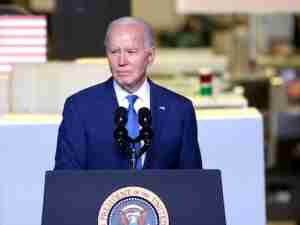Trump’s Tax Cuts May Be More Important for the Economy Than His Trade Policies
By: Isobel Finkel | Nov 10 2016 at 06:09 AM | International Trade
Tax cuts trump trade in Barclays Plc’s new outlook for the U.S. economy. While economists at the British bank say in their revised outlook that the President-Elect’s trade policies could shave 0.5 percentage points off U.S. annualized GDP growth in the months ahead, they’re still increasing their forecasts for 2017 on the expectation that the Republican nominee’s promised tax cuts will offset the decline.
Even with calculations that assume tariffs are limited to Mexico and Canada, who together form about a third of U.S. trade with the outside world, protectionist trade policies are set to substantially slow the economy, as higher prices discourage consumption and uncertainty turns businesses off making new investments, according to Barclays. Still, by the end of next year, tax cuts that are likely to be ushered through a Republican-majority Congress will boost spending power, and the public sector investment Trump has promised will contribute to making the slowdown a blip.
“In essence, our baseline is constructed on the theme that protectionist trade policy imposes a tax on the domestic economy in terms of higher prices, forced reallocation of activity, and potentially slower productivity growth,” the analysts led by Chief U.S. Economist Michael Gapen write in a note published on Wednesday. “To compensate for this, public sector policy then reduces personal and corporate tax rates and expands public sector investment spending.”
While the Republican President-Elect departed from tradition in maintaining secrecy around his own tax returns during his campaign, he offered slightly more clarity on the policies he intends to impose on the rest of the country. He vowed to reduce the corporate tax rate, eliminate some subsidies, and reduce seven tax brackets to three.
Government spending is expected to provide the economy with an additional jolt. Although Trump’s campaign was widely labeled as divisive, the potential for an expansionary fiscal policy comes just as economists from all sides of the political divide are expressing disenchantment with the monetary-policy levers that have been at the forefront of efforts to spur the economy over the last decade, calling for governments to direct stimulus instead of central banks. Trump has said that he’ll boost public-sector investment, promising in his victory speech to make America’s infrastructure “second-to-none.”
“All told, the impulse to real GDP growth from consumption and investment is 1.0-1.5 percentage points in late 2017 and early 2018, which would more than offset the drag in activity we estimated from higher tariffs,” Barclays said.
Still, the economists caution that forecasting U.S. economic growth post-Trump may be more difficult than normal given the high degree of uncertainty surrounding his policies. “Uncertainty in our forecast is much higher than normal, given the unorthodox nature of some policy proposals and lack of specific policy details,” they write.
If, by the end of 2017, Barclays has revised its U.S. growth targets up to 1.9 percent, from the 1.6 it had assumed before Trump’s victory, over the longer-term that spending-fueled growth is forecast to lose steam. In the same note Barclays revised down its 2018 full-year growth forecasts to 2.1 percent, from 2.3 percent previously, assuming the fiscal fillip that trumps trade tariffs to turn temporary.








